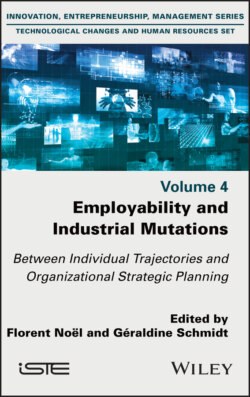Читать книгу Employability and Industrial Mutations - Группа авторов - Страница 36
2.2.1.3. Measuring employability-skills through mixed approaches
ОглавлениеAt the organizational level, Bonvin and Favarque (2007) consider that it is impossible to evaluate exhaustively and objectively all the freedoms and options of choice that individuals have in terms of employment, but that we can either apprehend a subjective measure (how much room for maneuver do individuals feel they have?), or approach it through the “incapacities” (set of constraints or deprivations encountered by individuals). They also suggest identifying typical trajectories that make it possible to highlight individual differences in the processes and modalities of occupational integration and to understand the different opportunities available to individuals. It is therefore by using a biographical approach that this form of employability can be measured by highlighting both the greater or lesser latitude of choice of individuals and the more or less secure nature of their professional environment (Corteel and Zimmermann 2007).
The exercise of evaluating employability prior to any form of development action is arduous. However, human resource management as a set of managerial techniques is entirely based on methods of evaluating phenomena that are known to be multidimensional, ambiguous and subjective: social climate, motivation, competence and potential are all equally vague quantities that are nevertheless the subject of measurement systems. The examination of evaluation systems often helps to identify the meaning given to the underlying concept. As already mentioned, it is mainly perceived employability that makes employees mobile. The aim of coaching and career development counseling methods is to build an appreciation of the universe of possibilities. The skills assessment meets this objective. Conversely, on the employer’s side, what makes workers employable is probably not very far from what makes them “recruitable”. Internally, the evaluation of employability is based on more or less tacit methods of detecting talent or measuring potential. In the outplacement units, methods are also used to direct workers towards a particular system. In the end, therefore, it is the examination of the conventions of judgment used by the actors in the internal or external labor markets that should be the focus of attention. There is a great deal of uncertainty, but the players generally know how to overcome it. Moreover, beyond impersonal criteria, the systems often provide for negotiation methods around which perceptions can be agreed. Interviews – whether they are “professional”, “recruitment”, “evaluation”, “orientation” or “dismissal” – precisely aim at reducing this uncertainty.
